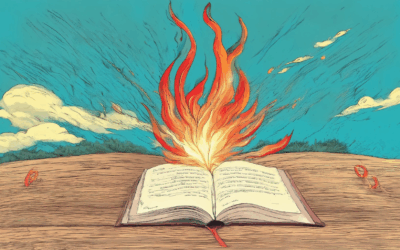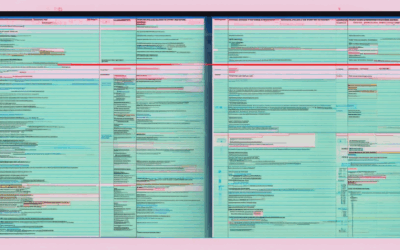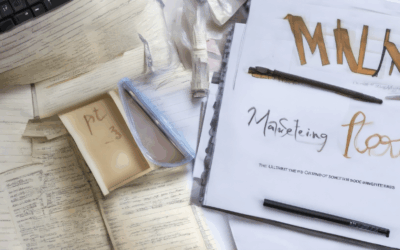Literary analysis is a powerful tool for unlocking the depths of texts, offering readers unique insights into the authors’ intentions, themes, and the broader meanings embedded within works of literature. By examining elements such as character development, plot progression, and symbolic representation, literary analysis enables a deeper understanding of how authors construct narratives and convey ideas. For anyone aiming to master this essential technique, this guide will walk you through the key strategies, devices, and methods that will help you conduct thorough and insightful analyses. From identifying prominent literary devices like metaphors and symbolism to exploring methodologies such as formalism and existentialism, this comprehensive resource will equip you with the knowledge and skills needed to approach literary analysis with confidence and precision. Whether you’re analyzing a classic novel, a poem, or a piece of drama, the techniques discussed in this guide will enhance your ability to engage with texts on a deeper level, ultimately enriching your reading comprehension and appreciation of literature.
Key Takeaways
- Master Literary Devices: Grasp the core elements such as metaphors, symbols, foreshadowing, alliteration, and irony to elevate your writing.
- Understand Their Functions: Recognize how these tools enrich your work by deepening themes, creating vivid images, forecasting events, and adding stylistic elements.
- Enhance Writing: Leverage literary devices to craft compelling narratives that captivate readers and leave a lasting impression.
- Apply Techniques Strategically: Use these tools purposefully in your writing to foster clearer communication and more dynamic storytelling.
- Anaphora: A Powerful Tool: Employ this device, exemplified by Martin Luther King Jr.’s “I Have a Dream” speech, to build intensity and reinforce key messages effectively.

7 Literary Devices Explained
The following are seven common literary devices used in writing, along with their definitions and examples:
- Metaphor : A direct comparison between two unlike things, often implying a similarity or connection. Example: “Time is a thief.”
- Simile : A comparison between two unlike things, usually involving explicit comparison words like “like” or “as.” Example: “Her smile was as bright as the sun.”
- Symbolism : The use of objects, actions, or concepts to represent something else, often an abstract idea. Example: A dove symbolizing peace.
- Personification : Giving human characteristics to non-human things. Example: “The wind whispered through the trees.”
- Hyperbole : An exaggerated statement for emphasis or effect. Example: “I’ve told you a million times.”
- Alliteration : The repetition of the same initial consonant sound in closely connected words. Example: “Peter Piper picked a peck of pickled peppers.”
- Imagery : The use of words to create vivid mental images. Example: “The sunset painted the sky in hues of orange and pink.”
These devices are essential tools for authors to enhance their writing and engage readers more deeply.
What Are the 5 Steps to Literary Analysis?
Literary analysis is a critical examination of texts to understand their meaning, themes, and structural elements. Below are five essential steps to guide you through the process:
1. Choose a Text
Select a work of literature that interests you. This could be a novel, poem, play, or short story. The text should be rich in themes, symbols, and characters to provide ample material for analysis.
2. Read Carefully
Approach the text with an open mind and read it thoroughly. Pay attention to details such as tone, imagery, dialogue, and pacing. Take notes on your observations and questions about the text.
3. Identify Key Elements
Look for recurring themes, character motivations, symbolic elements, and narrative structures. These components often interconnect to form the text’s overall message and purpose.
4. Analyze Interconnections
Examine how these elements work together and influence each other. Consider the relationships between characters, settings, and events, and how they contribute to the text’s meaning.
5. Formulate a Thesis Statement
Develop a clear thesis statement that presents your interpretation of the text. This statement should encapsulate your main argument and guide the rest of your analysis.
By following these steps, you can systematically approach and interpret literary works to deepen your understanding and appreciation of their significance.
For further assistance, visit our literary resources hub to explore more tips and insights on writing and analyzing literature effectively.

What Are the 7 Steps of Literary Analysis?
Here’s a breakdown of the essential steps involved in conducting a literary analysis:
- Choose Your Text : Select a passage, poem, story, or play to analyze. Consider the purpose of your analysis—whether it’s for personal understanding, academic purposes, or professional critique.
- Understand the Audience : Identify who your analysis is intended for. Tailor your approach to the audience’s level of familiarity with the text and the subject matter.
- Read Carefully : Analyze the text thoroughly, paying attention to details such as structure, tone, imagery, symbols, and themes. Highlight significant elements that stand out to you.
- Identify Key Elements : Break down the text into its components. Look for characters, setting, plot, symbolism, metaphors, and motifs. These elements will form the basis of your analysis.
- Analyze Interactions : Examine how these elements interact with one another. Consider how characters develop, how settings influence the mood, and how plots unfold to reveal underlying messages.
- Draw Conclusions : Based on your observations, formulate a coherent argument or thesis statement. Support your claim with evidence from the text and explain how the analyzed elements contribute to the overall work.
- Revise and Refine : Edit your analysis to ensure clarity, coherence, and depth. Remove unnecessary details and strengthen your arguments with precise language.
By following these steps, you can conduct a thorough and insightful literary analysis, providing valuable insights into the text you’ve chosen to examine.

What Are the 5 Literary Devices?
Here are five fundamental literary devices commonly used in writing:
- Metaphor
- Definition: A metaphor is a direct comparison between two unlike things, often implying a similarity or connection.
- Example: “Time is a thief” (from Shakespeare’s Macbeth ), where time is compared to a thief to emphasize its stealthy nature.
-
Symptomlism
- Definition: Objects, events, or symbols represent abstract concepts, ideas, or qualities.
- Example: In F. Scott Fitzgerald’s The Great Gatsby , the green light represents hope and the American Dream.
-
Foreshadowing
- Definition: A technique where clues or hints suggest future events.
- Example: In Harry Potter and the Sorcerer’s Stone , Professor Dumbledore’s comment about “something terrible happening” foreshadows the rise of Voldemort.
-
Alliteration
- Definition: Repetition of initial consonant sounds in closely connected words.
- Example: “Peter Piper picked a peck of pickled peppers” uses alliteration for rhythm and memorability.
-
Irony
- Definition: A statement that contradicts its intended meaning, often causing humor or confusion.
- Example: “What a beautiful day!” during a monsoon rainstorm highlights the irony of the situation.
These devices enhance writing by creating vivid imagery, suggesting future events, and adding stylistic flair, making literature more engaging and impactful.
What Are the Big Three Literary Devices?
The term “big three literary devices” commonly refers to three fundamental figurative language techniques used in writing: metaphor, simile, and analogy. These devices allow authors to convey complex ideas, emotions, or concepts in a more relatable and vivid manner.
- Metaphor: A direct comparison of two unlike things without using words like “like” or “as.” For example, “Time is a thief.”
- Simile: A comparison of two unlike things using words like “like” or “as.” For example, “Her smile was as bright as the sun.”
- Analogy: A comparison of two things based on their characteristics, often stretching the comparison for effect. For example, “This situation is like a storm brewing in the distance.”
These devices are frequently used in literature to enhance description and create deeper meaning. They help authors communicate abstract concepts and emotions in a tangible way, making stories more engaging and memorable.
For more insights into literary devices and how to master them, explore our website and discover practical tips for enhancing your writing.

Anaphora Example
Anaphora is a literary device characterized by the repetition of the same word or phrase to create a rhythmic effect and emphasize a particular idea or theme.
For example, in Martin Luther King Jr.’s iconic “I Have a Dream” speech, he uses anaphora effectively:
- The repetition of “let freedom ring” throughout the speech creates a powerful emotional impact.
- This technique builds intensity and reinforces the dream of equality and justice.
- The speech becomes more impactful due to the cumulative effect of the repeated phrase.
Visit James Whitfield Thomson to explore more storytelling techniques and discover how anaphora can enhance your own writing.
Additionally, check out our writing tips section for further insights into using literary devices effectively in your work.
Conclusion: Anaphora is a compelling tool for creating memorable and impactful communication, making it a valuable asset in both writing and speaking.





0 Comments